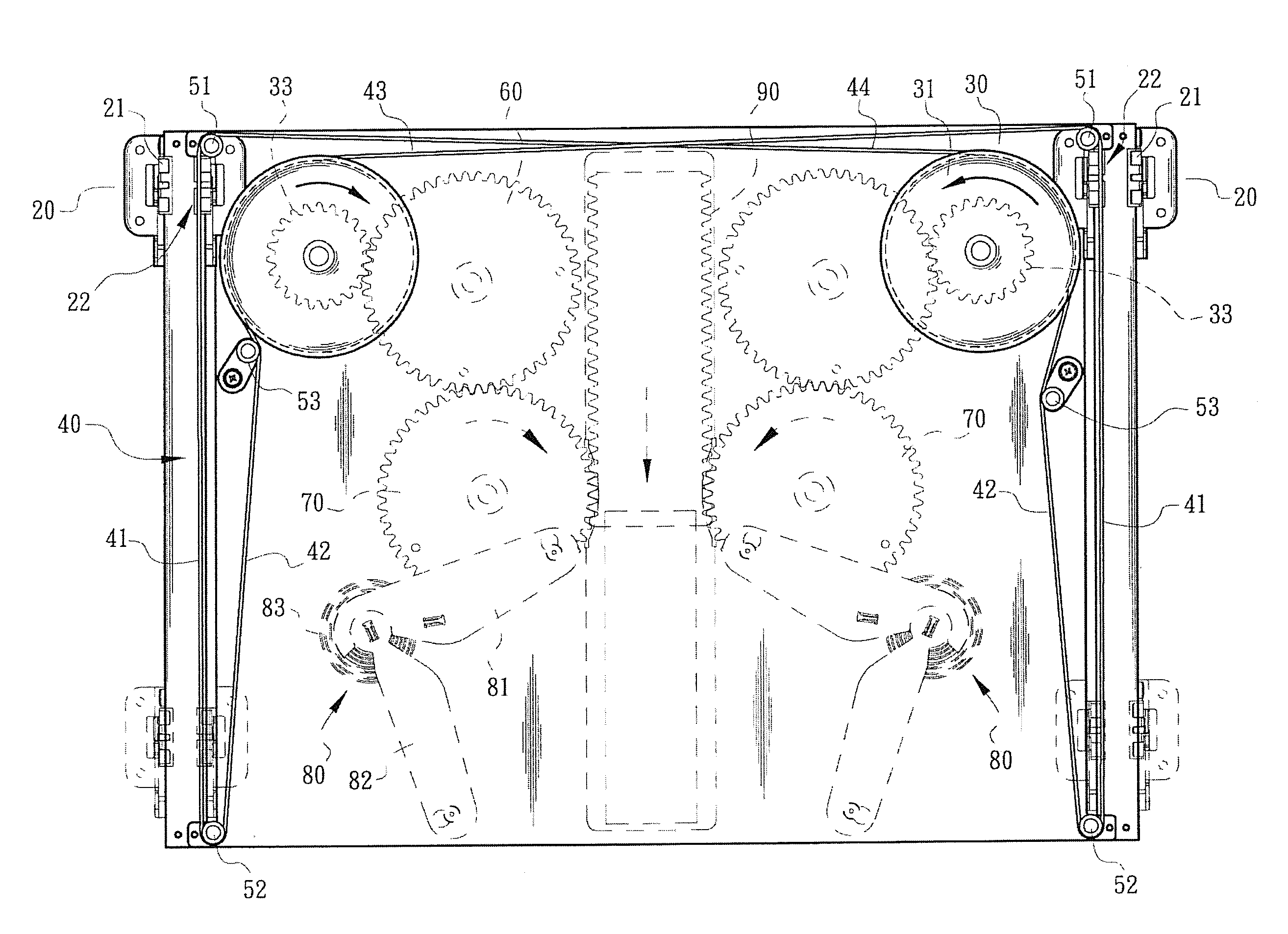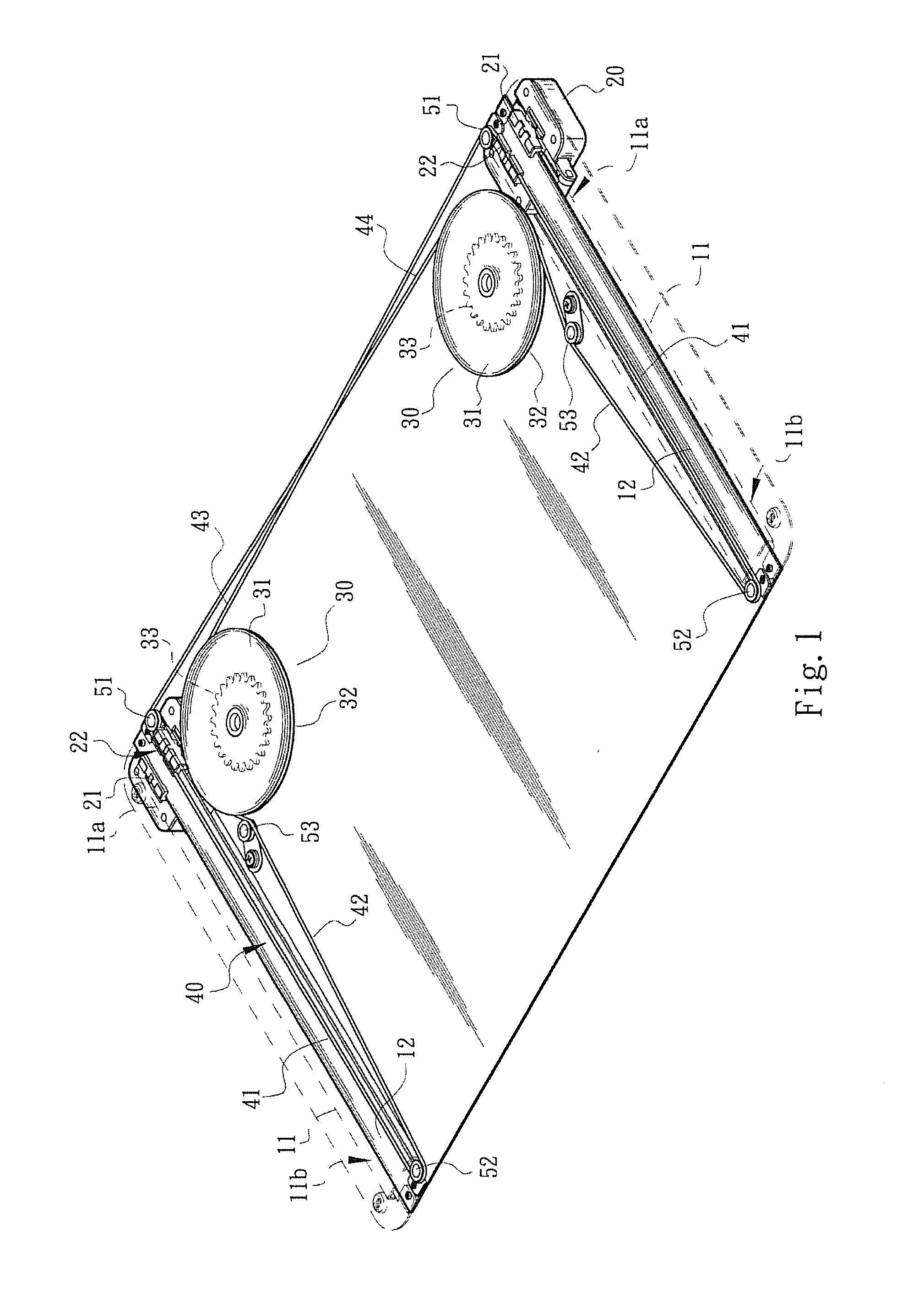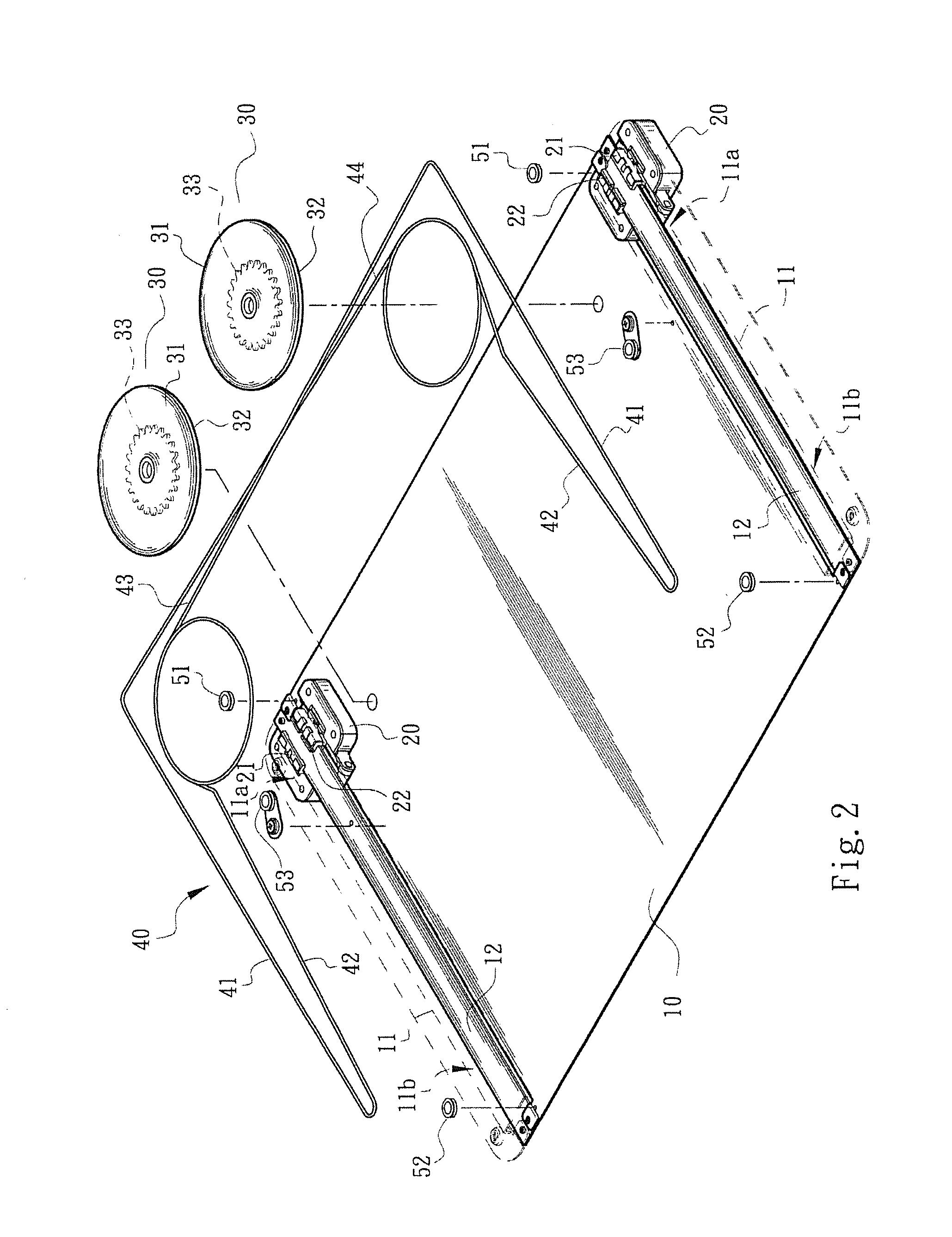Auxiliary device for sliding module
- Summary
- Abstract
- Description
- Claims
- Application Information
AI Technical Summary
Benefits of technology
Problems solved by technology
Method used
Image
Examples
Embodiment Construction
[0019]The following description is of the best-contemplated mode of carrying out the invention. This description is made for the purpose of illustrating the general principles of the invention and should not be taken in a limiting sense. The scope of the invention is best determined by reference to the appended claims.
[0020]Referring to FIGS. 1 and 2, an auxiliary device of the invention for a sliding module comprises a substrate 10, two movable or sliding racks 20, two belt wheels 30 and a wire 40. The substrate 10, selected of a plate formed of a type of integral formation, is disposed on a fixed body of an electronic device (not shown in FIGs.). In the adopted embodiment, the substrate 10 comprises two guiding portions 11 represented by imaginary lines of FIGS. 1 and 2. The sliding racks 20, utilized for pivoting the wire 40 and disposed on the guiding portions 11 of the substrate 10, are movable on the guiding portions 11 of the substrate 10. The sliding racks 20 are capable of ...
PUM
 Login to View More
Login to View More Abstract
Description
Claims
Application Information
 Login to View More
Login to View More - R&D
- Intellectual Property
- Life Sciences
- Materials
- Tech Scout
- Unparalleled Data Quality
- Higher Quality Content
- 60% Fewer Hallucinations
Browse by: Latest US Patents, China's latest patents, Technical Efficacy Thesaurus, Application Domain, Technology Topic, Popular Technical Reports.
© 2025 PatSnap. All rights reserved.Legal|Privacy policy|Modern Slavery Act Transparency Statement|Sitemap|About US| Contact US: help@patsnap.com



